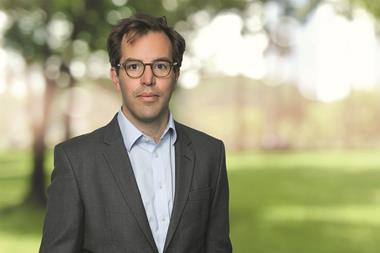In his address to the Global Investment Summit at COP26 last year, prime minister Boris Johnson announced nearly £10bn of private investment in green projects. “The market is going green,” he said, predicting that one day we will be able to bring down the prices of green tech such as heat pumps and solar panels.

From green and self-sufficient buildings to harnessing solar energy, from vertical gardens and farms to energy generation from waves, “green is good, green is right, green works”, said Johnson while also warning that urgent action was needed to mobilise the markets and bring the private sector on board.
While we are not short on examples of green technology and sustainable initiatives, the lending market is still lagging when it comes to providing debt to support such initiatives, especially in the building and construction sector.
The reality is that self-sufficient buildings and regenerative developments often have a very specific set of requirements that need to be considered when seeking debt finance.
This requires understanding of eco-friendly construction design, buildings designed to be operated independently from infrastructure support services such as electric power and gas grids and municipal water systems and materials that minimise environmental impact. Sadly, not many lenders are yet able to offer such understanding.
At Blend Network, we have grasped the strategic importance and potential of this sector, and therefore have a dedicated lending team with extensive knowledge and experience in providing debt funding to sustainable building and regenerative development schemes. Our team regularly reviews and issues terms on environmentally friendly schemes that are designed to prioritise sustainability, embrace regeneration and empower their residents to live a fulfilling, healthy and sustainable lifestyle.

From a property developer’s perspective, environmental performance and ESG credentials can help improve sales or attract better tenants who are increasingly seeking efficient, healthy and green-certified buildings to live and work in. Incorporating ESG factors can lead to increased profitability through higher property values, attracting more/better tenants and improved returns on investment.
Aside from making decisions that are socially responsible or morally right, the growing trend of ESG integration among companies and investors makes the need to address sustainability within the construction industry increasingly important.
The drive to create a green economy has accelerated, powered by a confluence of environmental and societal forces. In this context, the time is ripe for lenders to chip in and support the road to net zero. It is no longer enough to talk the talk; we must walk the walk.
Yann Murciano is chief executive at Blend Network
































No comments yet